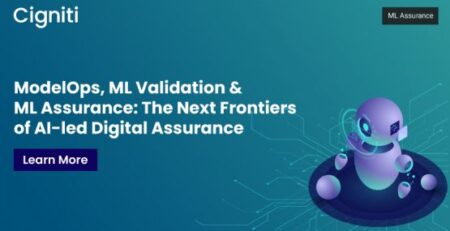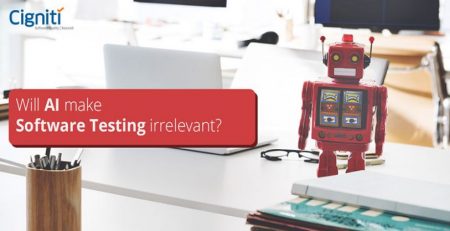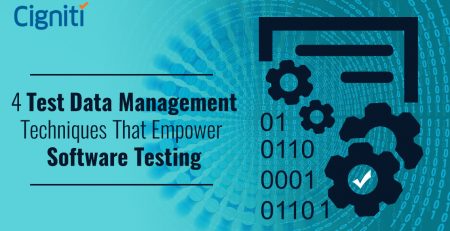Reflexions from 2016: Top Software Testing Priorities for 2017
2016 has been a year of successful technology ventures as well as a year of data and security breaches. Interestingly, this has opened up a lot of lucrative opportunities for Big Data and Security professionals. Data is at the core of all innovations, a key enabler for enterprises to plan their next move in this highly competitive space. 2017 is going to take this game to the next level and intensify the need for robust testing mechanisms.
Inventive and flexible approaches such as shift-left, DevOps, Agile have redefined software development as well as software testing. Testing is no more an afterthought, it is increasingly becoming a priority. With new age digital scares and testing approaches, software testing goes alongside with development, so the key phrases are Continuous Development and Continuous Delivery.
Today, Virtual Reality is an evolving concept. Tomorrow, Virtual Reality will have features to estimate changes for the future and plan accordingly. Robotics is being implemented across various industries and actual robots have already got on the ground today to monitor public space like airports.
At Gartner Symposium/ITxpo 2016 in Orlando, Florida, David Cearley, Vice President and Gartner Fellow announced 3 themes — intelligent, digital, and mesh, which form the basis for the Top 10 strategic technology trends for 2017. In its report on ‘Top 10 Strategic Technology Trends for 2017’, Gartner has estimated Artificial Intelligence, machine learning, and smart things as the game changers for an intelligent future.
The question prevails – how do we make this human-machine interface smooth and secure?
Testers and developers are increasingly collaborating to build agility and robustness in the development process. While we speak about software testing priorities for 2017, technology will continue to be the ruling factor. So, let’s look at the reigning technology trends for 2017.
- Artificial Intelligence and Machine Learning
AI has been increasingly used across life-defining sectors like healthcare and medicine. It involves deep learning, neural networks, and language processing. It further comprises advanced systems that comprehend, learn, forecast, and possibly operate independently.
These systems are capable of learning and determining future behaviour. AI and ML will be increasingly used to develop intelligent devices and programs. Its application will continue to grow across socially-medically-politically-economically critical sectors.
- Smart Apps
It comprises technologies like Virtual Personal Assistants (VPAs) with capabilities to transform your office environments, making it more accessible from any and every location. The core purpose will be to boost efficiency and bring down the infrastructure cost, which is an increasing concern for enterprises. While this will not be limited to digital assistance, it will also cover security tooling and enterprise applications, powered with AI capabilities.
- Smart Things
Some key considerations under smart things are – robots, drones, and unmanned vehicles. These areas are expected to evolve further and become a hugely lucrative marketplace with interesting devices that will take automation to the next level. It is expected that the existing IoT devices will evolve to become intelligent systems with AI enabled feature. These systems will dominate you homes, workplaces, manufacturing floors, hospitals, retail outlets, and much more.
- Virtual Reality
Virtual and Augmented Reality is already transforming the ways in which communication is done globally and how diverse and impressive environments are created. Today, Virtual Reality is not just used for infotainment purposes, it is being leveraged for a larger cause globally. For instance, United Nations is using Virtual Reality to showcase its global activities to corporates and philanthropists, raise funds and drive the much needed attention.
- Blockchain Technology
Blockchain is being increasingly considered in sectors like banking and music distribution. It is a type of distributed ledger, where value exchange transactions are grouped serially into blocks. Blockchain and distributed-ledger are getting popular, as they hold the assurance of transforming an industry’s general operating model.
- Digital Platforms
Digital Transformation is changing the way enterprises and businesses are communicating and connecting with their end users. An enterprise is expected to have 5 technology platforms – IT systems, customer interface, Big Data and Analytics dashboard, dynamic ERP system, Smart devices. Experts predict that the key focus will be on platforms and services that are geared by IoT, AI, and interactive systems.
- Robust but adaptive Security architecture
Intelligent devices and smart digital platforms are surrounding us, and in this scenario it is important to ensure that all the security loopholes are sorted. In the IoT landscape, security teams have to work with applications, solutions, business analysts, and enterprise architects to build robust and responsive solutions.
Multi-layered security and application of behavioural analytics of the users is getting increasingly critical for viability in the marketplace.
If analysts and industry specialists have judged it right, 2016 has seen phenomenal moves in building faster Software Development Lifecycles (SDLCs) for quicker releases.
Keeping the dominant technology trends and key requirements of software development into perspective, these are some key trends we foresee in Quality Assurance & Testing.
- Open Source Innovation
Open Source platforms have been a big hit for the dynamic and active interface it offers and its cost effectiveness. Thanks to the number of start-ups and enterprises cutting down on their operational investments, Open Source software will grow in popularity and continue to offer an engaging platform for developers and testers.
- Test Automation
Digital Transformation and SMAC has set fresh standards for application development and performance. Enterprises are experiencing the need to transform their legacy systems and cater to millennial users. This requires constant testing and validation on a recurring basis to speed up the application development cycle and keep up the quality.
Businesses will need responsive test automation suites, new approaches and strategies to build market ready applications for the digital era.
- Continuous Integration
Market challenges are immense and there is a need for faster software development lifecycles to gain speed to market. So, QA teams and development teams are collaborating and working in an agile set-up. The process of software/application development will continue to define and redefine, as there will be a constant need for credible software and higher RoI.
Automation helps fix bugs faster and helps continuous integration, which will speed up SDLCs.
- Mobility Services/Devices Testing
Mobility services are at the peak in the Digital Transformation landscape, as it is a key factor for both individual and enterprise application consumption. With m-commerce and m-wallets getting popular, there will be a constant demand for Mobile testing.
Various combinations of testing mechanisms will have to be devised to meet the diverse and challenging needs of Mobility services.
- Security Testing
2016 has seen some major data breaches and financial hacks, which has increased the demand for security testing professionals. Applications will get complex and digital technologies will pose its own security challenges, making security testing an indispensable aspect in the SDLCs.
Application security will continue to be a priority for enterprises in this volatile and uncertain market space. So, what you can expect is a potential blend of manual and automated code analysis, dynamic and static security testing, and penetration testing.
- Big Data Testing
Data is expected to drive innovations and industries in 2017, as all the decision making is going to get concentrated on the big data analytics. Testing the Performance and functionality of Big Data will eventually get critical. Enterprises and various business functions are exploring Big Data for deriving logical patterns, so Big Data testing is bound to gain its share of significance in the New Year.
- IoT Testing
Yes, it is the buzzword and it is impossible to escape from its benefits and adoption in the new age. IoT applications are getting adopted across industries and the trend will only continue to rise. QA and Testing professionals have a big role to play while ensuring the functionality and performance of every aspect in the entire gamut of devices.
QA and testing for IoT is being considered by enterprises as a strategic investment for future gains. IoT apps along with AI, Robotics, and Machine-learning will need rigorous testing in order to avoid security and functional lapses.
In this overall technology and QA game, let’s not miss out on the outsourcing bit. Enterprises will outsource software testing with the core purpose to ensure efficiency, quality, speed, and cost effectiveness.
Cigniti continues to work with innovative businesses to transform and boost their Quality Assurance and Testing platforms. Our experts collaborate with enterprises to help them gain competitive edge and launch market-ready products/services.





Leave a Reply